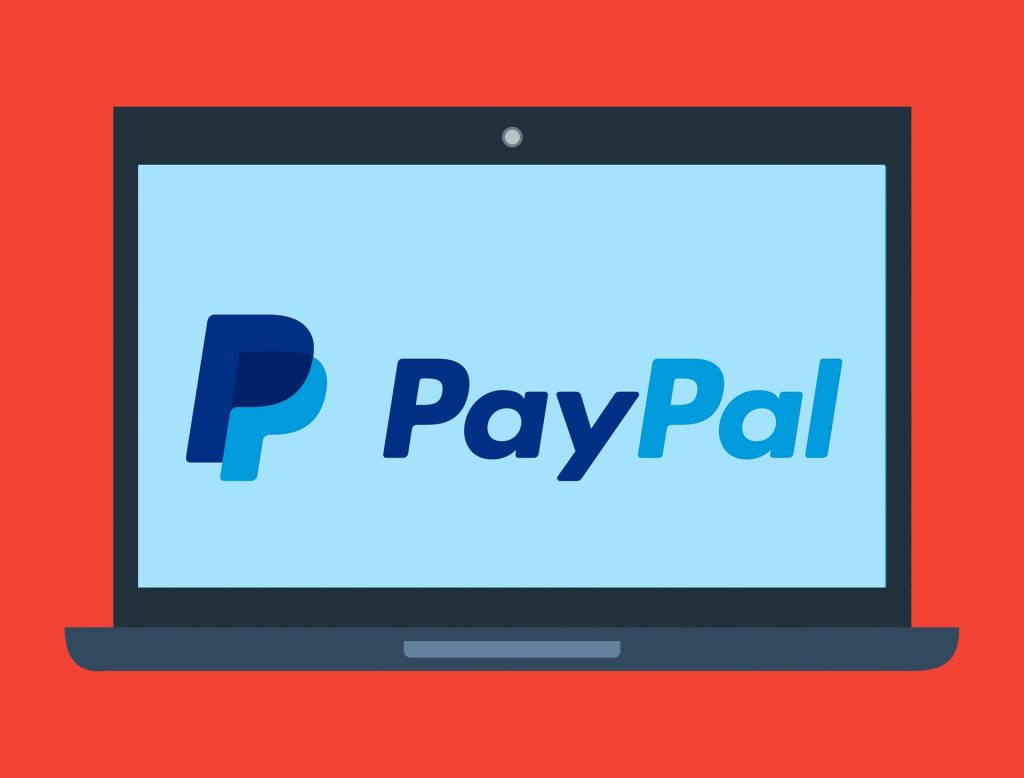When you use PayPal to pay for goods or services, they will often convert the payment into your local currency. In most instances, PayPal will charge roughly 4% of the amount being transferred – which is way higher than the average of 2% that banking or credit institutions charge. This can lead to significant fees, especially if the conversion rate is unfavorable.
However, there are circumstances where sending money via PayPal is inevitable. In this case, you should try your best to reduce the cost of PayPal’s currency conversion rate. Fortunately, there are a few steps you can take to avoid these unnecessary fees.
How PayPal Calculates their Exchange Rates
If you’re like most people, you probably have wondered “how does PayPal calculate its exchange rates?” Well, PayPal uses a variable exchange rate that’s based on the currencies being converted. This rate is updated hourly and can be found on the PayPal website.
Let’s say you want to send $100 US dollars to a family member in Mexico: PayPal will use the current exchange rate and calculate how much it’s worth based on the Mexican Peso. This means that your relative in Mexico will receive something a little less than $100 USD in MXN after PayPal takes its fee.
PayPal’s currency converter spread is determined by the type of transaction. There are two types of transactions conducted through PayPal, those where you send money to a PayPal account and those where you directly pay someone. PayPal charges different fees for each transaction. This is called the “customer fee” or “seller fee”, depending on whether you are sending or receiving funds.
Also, if you send money using the PayPal Payouts feature in a currency that’s not held in your account, you will face a ~4% fee.
It’s important to note that on top of PayPal’s currency conversion fees and domestic fees, you’ll likely face an additional international transaction fees. These are typically 5% ($0.99 minimum; $4.99 maximum). Wow that’s a lot of fees, right?
Even if you are simply converting your PayPal balance from one currency to another, and not even sending the money anywhere, you’ll still face a currency conversion fee.
The sender’s currency determines the exchange rate. PayPal uses an exchange rate for each currency. When you send money in a particular currency, PayPal will use the corresponding exchange rate to convert it into the currency of the receiver.
You may assume that the receiver won’t have to pay any additional fees … but unfortunately you’d be mistaken. Depending on the country of residence and currency of the receiver, they might have to pay a fixed fee.
The customer fee also applies to cross-border payments. Cross-border payment is defined as a payment where the sender and receiver are in different countries. If you make a payment to someone in a foreign country, PayPal will apply the customer fee, regardless of whether the payment is going to a PayPal account or a regular bank account.
The PayPal currency calculation is based on an algorithm using live market rates and dynamic currency conversion data, which is updated hourly. PayPal calculates exchange rates by looking at the following factors:
- Market depth for each currency pair.
- Historical conversion rates for each currency pair.
- The spread between the live market rates.
- Fees for customers and PayPal as a merchant.
Where can I check the current exchange rate on PayPal?
To view the current PayPal rates, log into your account, go to your Wallet, and click “Currency Calculator”. Then select the currencies you want to convert from and to. The exchange rate will appear automatically.
How to avoid PayPal’s currency exchange fees
There are a few ways to reduce or avoid PayPal’s currency conversion fees if it is a must that you use PayPal:
1. Use a PayPal account that is denominated in the same currency as the receiver’s account.
When you send money to someone, PayPal will use the exchange rate for that currency. So, if you have a PayPal account in Mexican pesos and your friend in Mexico has a PayPal account in Mexican pesos, PayPal will use the Mexican peso-to-peso exchange rate to make the conversion. This is the best way to avoid fees altogether.
2. Transfer money in your home currency.
If you don’t have a PayPal account denominated in the currency of the receiver’s country, then send money in your own currency and let PayPal convert it. This exchange rate is almost always better than any other option since it tends to be much more favorable for buyers and sellers. The downside is that PayPal charges a conversion fee for this service.
3. Use a credit or debit card to fund your PayPal account.
When you use a credit or debit card to fund your PayPal account, PayPal will not charge any fees for currency conversions. This is because the credit or debit card company will handle the conversion for you. However, note that the credit or debit card company may charge its conversion fees. Exchange rates offered by banks are lower than those of PayPal, meaning that you will lose less money.
4. Use a PayPal prepaid card.
When you use a PayPal prepaid card, PayPal will not charge any fees for currency conversions. This is because the PayPal prepaid card is denominated in the same currency as the receiver’s account. The downside is that PayPal charges a fee for loading the card with funds.
5. Use a multicurrency card
A multicurrency card allows you to hold multiple currencies on a single card. This can be helpful if you frequently make payments in different currencies. When you use a multicurrency card, the cardholder will always receive the best exchange rate available. This is because the card issuer will use the current exchange rate to convert the funds on the card into the desired currency. There is no additional charge to use the card, and no commission is charged on foreign transactions. The downside is that not all banks offer multicurrency cards.
There are several PayPal alternatives available, such as Wise (formerly TransferWise), Remitly, and WorldRemit, that offer cheaper rates than PayPal. Using one of these services may be a better option if you frequently make cross-border payments.
6. Use a Revolut Card
A Revolut card is a multicurrency card that allows you to hold multiple currencies on a single card. This can be helpful if you frequently make payments in different currencies. When you use a Revolut card, the cardholder will always receive the best exchange rate available. This is because the Revolut card issuer will use the current exchange rate to convert the funds on the card into the desired currency. There is no additional charge to use the card, and no commission is charged on foreign transactions. The downside is that not all banks offer Revolut cards.
7. Use the PayPal app
The PayPal app is available for Android, iOS, and Windows Phone. With the PayPal app, you can perform almost all of your account management tasks on the go. You can send money to friends without having to sign in to your computer or open another browser tab. When you use the PayPal app, you are not subject to foreign transaction fees since PayPal does not charge such fees. The downside is that PayPal may charge a fee for the service.
8. Split the payment into multiple transactions.
If you are paying for a large purchase, you can avoid PayPal’s conversion fees by splitting the payment into multiple transactions. This will also help to keep your account in good standing with PayPal. Remember that each transaction will incur a fee, so try to group similar items. For example, if you are buying a new TV, sofa, and bed, you should pay for the whole order in one transaction.
9. Use a bank that doesn’t charge for currency conversion.
If you don’t want to use PayPal or one of its alternatives, you can use your bank to make foreign transactions. However, not all banks do not charge for currency conversion. Before you go this route, be sure to check with your bank to see if it charges a conversion fee. If it does, you may be better off using PayPal. Use the following list to find out which banks do not charge for currency conversion:
10. Use PayPal’s “Mass Pay” function.
If you are making a payment to multiple recipients, you can use PayPal’s “Mass Pay” function. This will allow you to send payments to multiple recipients without having to enter their information manually. When you use the Mass Pay function, PayPal will charge a flat fee of $0.25 per recipient. This may be a more economical option than sending individual transactions.
Why Multi-Currency Cards are The Better Option
Finding an option to use instead of PayPal might be one of the most liberating experiences you might have. You can either go with the classic PayPal system or try some of the alternative systems. But it’s time to be more efficient and choose one of these multi-currency card options that will provide you with much better rates than what PayPal is charging its users right now.
There are many advantages that you can accrue when you make the switch to one of these cards. First, let’s look at PayPal, and how it works: PayPal is a great system that is very popular for online transactions all over the world. The company allows users to send and receive money without revealing any kind of financial information. You don’t need a PayPal account to use the system either.
However, PayPal charges a conversion fee when you purchase in a foreign currency. This fee can be as high as 4% of the total transaction amount. That means that if you’re buying something for $100, PayPal will charge you an additional $4 just for the convenience of using their system. And that’s not including the standard transaction fees.
Now, you might argue that PayPal is a small fee to pay for the convenience of having an international money transfer system right at your fingertips. You don’t have to go through the hassle of using a foreign credit card or opening a bank account in a foreign country. But there are other options out there that provide users with much better rates.
The first option to look at is offering Multi-currency MasterCards. These are the perfect replacement for PayPal since they work in the same way. You can buy something in a foreign currency without having to worry about hidden fees, and you have all the convenience of using your credit card online.
Another great thing about these cards is that you can load them with only one currency at a time. This means you will never have to worry about fluctuating exchange rates or hidden conversion fees for a specific type of currency again.
What’s more, this option gives users the best exchange rate possible, which can be as low as 0% instead of PayPal’s 4%. And there are no additional charges for using the card or withdrawing money from an ATM.
You can also carry these cards with you when you travel abroad and use them in any place that accepts MasterCard. Unlike PayPal, this is a very safe option because the card issuer will never charge your account without your consent.
You also do not need to be connected to the internet to use your card. Just make sure you have enough money loaded on it before you leave home.
The second option is a product called Revolut. This system also allows users to buy things in foreign currencies without hidden fees, and it offers a better exchange rate than PayPal. However, Revolut does charge a 2% withdrawal fee when you use your card to purchase something in a foreign currency.
The only downside to these cards is that you might not be able to find a card that supports your home currency. But this can easily be solved by using a prepaid currency card instead. Prepaid currency cards are a great way to load multiple currencies onto one card, and they usually have much better rates than regular debit or credit cards.
Final Verdict
It’s time to stop using PayPal for all your online transactions. There are much better options available that will save you a lot of money in the long run. Use one of the Multi-currency MasterCards or a prepaid currency card to get the best rates possible without any hidden fees. And don’t forget to always check the exchange rate before you start a transaction. It can save you a lot of money in the end.
If you find yourself in a scenario where you must use PayPal, then make sure to follow some of the tips we have provided to help you reduce or avoid PayPal exchange rates altogether. This may include converting your currency into the foreign currency of the purchase you are making or loading your PayPal account with the currency you will be spending beforehand.
No matter what option you choose, always remember to do your research and read the fine print before committing to anything. It’s important to know exactly what you’re getting yourself into when it comes to online transactions.
However, once you have made the switch to using any of the above options for your online purchases, it’s unlikely that you will ever want to go back to PayPal again. There are just too many benefits in making the switch, along with no downside or hidden fees whatsoever.




